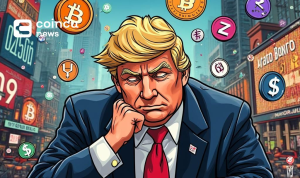Token migration, also known as token swaps, is the process of transferring a token from one blockchain to another during a blockchain changeover. This can occur when a new blockchain is launched or when projects switch from one protocol to another. Token migrations are an important aspect of the blockchain ecosystem that allows projects to evolve and optimize their functionality.
For example, let’s consider the case of Mithril (MiTH). This project recently underwent a migration from Ethereum to Binance Chain. Many new projects do not have their own blockchain or are still in the development stage, so they choose to migrate their investors’ tokens from third-party platforms to their own chains, triggering token migrations.
In the early stages of the cryptocurrency industry, many projects and companies utilized Ethereum’s ERC20 token standard. However, as these projects developed their own blockchains, they migrated the tokens from Ethereum to their native blockchains. One advantage of this approach is that investors are not required to lock up their funds. Instead, they can trade these placeholder tokens on exchanges while the new projects develop their technology.
There are various reasons why token transfers from one blockchain to another occur. Technical and economic factors can influence the decision to migrate. Blockchain projects often start with whitepapers that promise groundbreaking technologies in the future. As these projects progress, they may undergo significant changes, including the decision to move to a different blockchain.
In certain situations, investors may be required to migrate to a specific cryptocurrency or token. This involves shifting the balance of a token holder from one blockchain to another. Token migration, therefore, involves transferring the balances of investors from their current wallets to a new compatible wallet provided by the project. The actual tokens move from one blockchain to another after the transition is completed.
It is worth mentioning the role of initial coin offerings (ICOs) in the token migration process. ICOs are fundraising strategies where projects create tokens that can be purchased by anyone who wants to participate in the project’s future advancements. These tokens are often outlined in a whitepaper, explaining how they will be utilized in the project’s envisioned technologies or blockchains. In the ICO boom of 2018, many projects launched their tokens on the Ethereum network using the ERC-20 token standard. Once these projects established their own blockchains, they transferred their investors’ tokens from Ethereum to their own chains.
The process of moving tokens during a migration can vary depending on the project. If you hold tokens that need to be migrated, you may need to initiate the process yourself. However, this does not require any programming knowledge. Most projects provide user-friendly methods that link to your wallet address and allow you to move tokens within seconds. Additionally, if your tokens are held on a major cryptocurrency exchange, they will likely handle the token transfer for you.
With the increasing push for blockchain integration and adaptability, token migrations, especially those that can operate on multiple chains, are expected to thrive and gain popularity within the emerging blockchain ecosystem. Token migration plays a vital role in the evolution of blockchain projects and enables seamless transitions between different protocols, improving the overall functionality and user experience.















